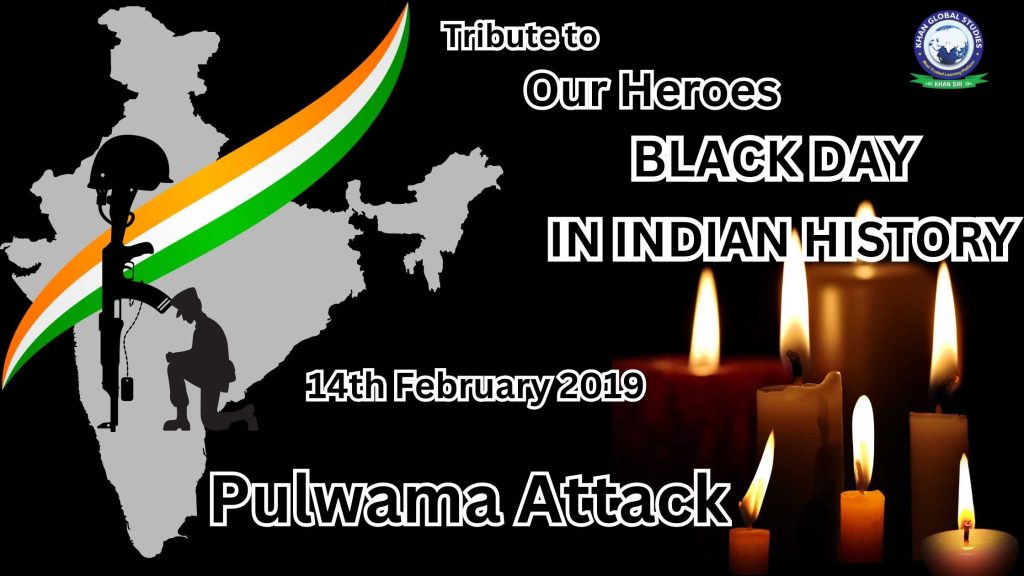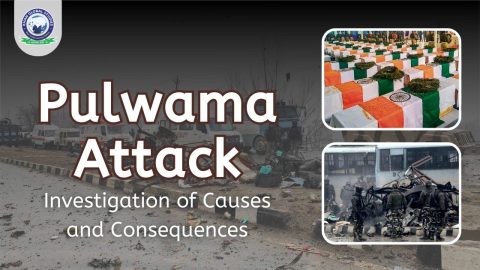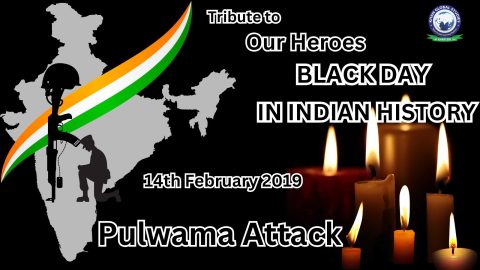February 14, 2019, is remembered as one of the darkest days in India’s history. On this day, a suicide terrorist attack in the Pulwama district of Jammu and Kashmir led to the martyrdom of 40 CRPF (Central Reserve Police Force) personnel. This attack was one of the deadliest on Indian security forces, shaking the entire nation and strengthening India’s resolve in its fight against terrorism.
Background
Kashmir has been a disputed region, claimed by both India and Pakistan. Since the late 1980s, terrorism in the region has escalated, with Pakistan’s support playing a key role. Since 1989, approximately 70,000 people have lost their lives, including terrorists, civilians, and security personnel.
On February 14, 2019, at around 3:15 PM, a convoy of CRPF personnel was traveling from Jammu to Srinagar. The convoy consisted of 78 vehicles carrying about 2,500 soldiers. Due to a two-day highway closure, a larger group of soldiers was being transported together. As the convoy passed through the Avantipora area of Pulwama, a suicide bomber crashed a vehicle loaded with an improvised explosive device (IED) into a CRPF bus. The explosion killed 40 soldiers instantly. The attacker, Adil Ahmad Dar, a local resident of Pulwama, also died in the attack.
Pakistan-based terrorist organization Jaish-e-Mohammed (JeM) claimed responsibility for the attack and released a video of Adil Ahmad Dar, where he admitted to planning a suicide attack. India held Pakistan responsible for the attack, though Pakistan condemned the incident and denied any involvement. However, JeM’s chief, Masood Azhar, was known to be operating from Pakistan. This attack significantly strained India-Pakistan relations, leading to the 2019 India-Pakistan military confrontation.
The Conspiracy Behind the Attack
The attack was orchestrated by terrorist organizations based in Pakistan. The suicide bomber, Adil Ahmad Dar, had ties with Jaish-e-Mohammed and was already on the radar of security agencies. However, he was radicalized and trained by the terrorist group. Investigations focused on how such a large quantity of explosives was gathered and how the attack was executed.
Before the attack, Indian intelligence agencies had issued at least 11 alerts warning of a possible terrorist strike. Just two days before the attack, Jaish-e-Mohammed had released a video of a suicide bombing in Afghanistan, threatening to carry out a similar attack in Kashmir.
Investigation and Actions Taken
After the attack, the National Investigation Agency (NIA) formed a 12-member team to probe the incident. Initial investigations revealed that around 300 kilograms of explosives, including 80 kilograms of RDX, were used in the attack. The NIA later confirmed that the suicide bomber was Adil Ahmad Dar.
In August 2020, the NIA filed a charge sheet against 19 accused terrorists. By August 2021, seven terrorists, including key conspirators, were killed, while seven others were arrested.
Consequences of the Attack
- India revoked Pakistan’s Most Favored Nation (MFN) trade status and imposed a 200% import duty on Pakistani goods.
- The Financial Action Task Force (FATF) kept Pakistan on the “grey list”, issuing strict warnings about its ties with terrorist organizations.
- Nationwide protests, candle marches, and anti-Pakistan rallies were held across India.
- The Indian film and television industry banned Pakistani artists from working in the country.
India’s Response
The attack triggered nationwide outrage, and the Indian government pledged a strong retaliation. As a response, on February 26, 2019, the Indian Air Force (IAF) carried out the Balakot Airstrike, targeting Jaish-e-Mohammed’s terrorist training camps in Pakistan-occupied Kashmir (PoK).
India also launched diplomatic efforts to isolate Pakistan globally. This included pushing for Pakistan’s continued presence on the FATF “grey list”, and gaining international support for its counter-terrorism measures.
Balakot Airstrike
On February 26, 2019, Indian Air Force Mirage-2000 fighter jets crossed the Line of Control (LoC) and bombed a terrorist training facility in Balakot, Pakistan. India claimed that 300–350 terrorists were eliminated in the airstrike, though Pakistan denied any casualties.
India-Pakistan Military Tensions
Following the Balakot airstrike, tensions between India and Pakistan reached a peak. In an aerial dogfight, the Indian Air Force’s MiG-21 was shot down, and Wing Commander Abhinandan Varthaman was captured by Pakistan. Due to international pressure, Pakistan released him on March 1, 2019.
Attacks on Kashmiris and Public Reaction
After the Pulwama attack, incidents of violence against Kashmiri students and traders were reported in several parts of India. Some Kashmiri residents were forced to flee, while shops were attacked. However, many Indian citizens also stepped forward to protect and shelter Kashmiri students.
National Outrage
The attack sparked nationwide anger against Pakistan and terrorism. People took to the streets to pay tribute to the martyrs. Social media was flooded with demands for stringent action against terrorist organizations. The incident deepened the sentiment of respect for soldiers and hatred for terrorism among Indians.
Conclusion
The 2019 Pulwama attack remains one of the deadliest terrorist attacks on Indian security forces. The incident escalated tensions between India and Pakistan, leading to the Balakot Airstrike and a military standoff. Indian security forces launched decisive operations, eliminating several terrorists responsible for the attack. The Pulwama attack marked a significant shift in India’s security policies, reinforcing its commitment to eradicating terrorism.





